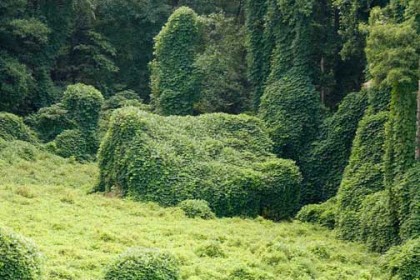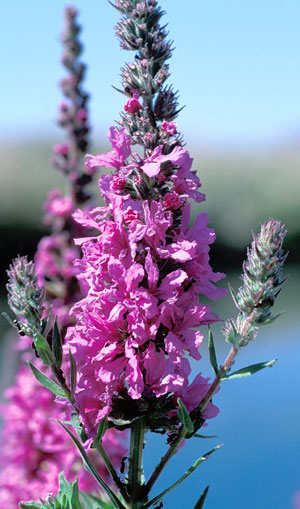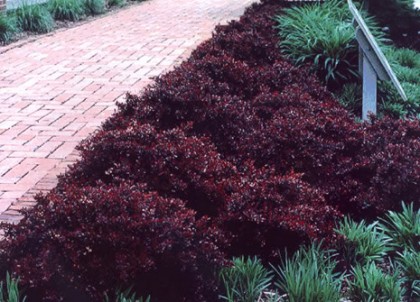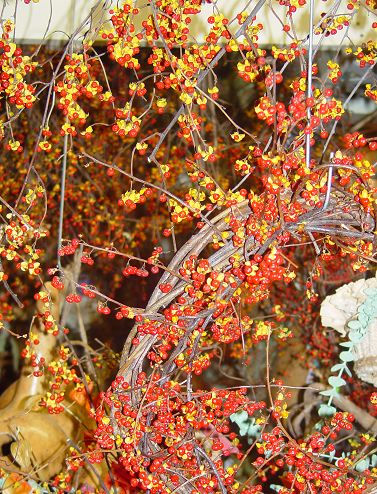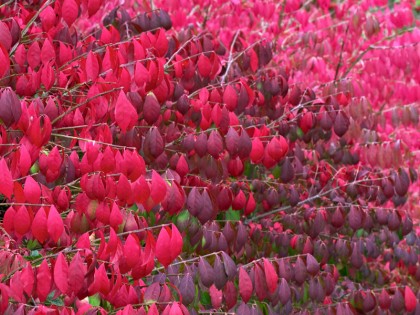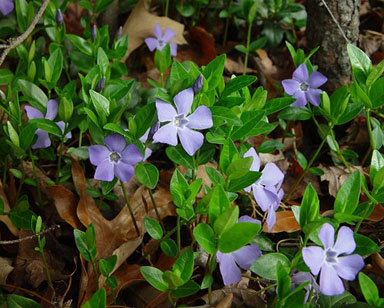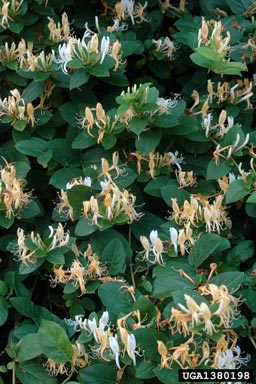I’m only kidding a little. We’re being invaded. Fuh reals. I recently wrote about my intent to keep invasive plants out of my garden. Perhaps I should clarify — when I say “invasive,” I don’t mean plants that are a little rambunctious. I’m talking about something much more menacing.
Here’s The Nature Conservancy’s definition:
On their home turf, plant and animal populations are kept in check by natural controls, like predators and food supply. However, when a species is introduced — accidentally or intentionally — into a new landscape that is not used to its presence, the consequences can be devastating. Most of these “non-native” species do not misbehave. But some non-native species spread unchecked by the lack of natural competitors and predators. They push out native species and cause ecological chaos. These are known as “invasive” species.
Here’s an excellent example I know you’re familiar with: Kudzu.
Originally from Japan, it was brought to America in 1876 as part of an international exposition. The plant was pretty, easy to grow and became increasingly popular with gardeners.
During the Great Depression of the 1930s, the Soil Conservation Service promoted kudzu for erosion control. Hundreds of young men were given work planting kudzu through the Civilian Conservation Corps.
The planting of well over a million acres of the stuff was fully subsidized by the U.S. government. The South’s balmy climate is perfect for Kudzu, so of course it thrived. And then it kicked ass. Literally. It smothers native trees and plants to death. Researchers have tried torching it, spraying it with deadly (to everyone) chemicals, and sic-ing kudzu-eating bugs and sheep on it. Now there’s talk of it being used for biofuel — I hope that catches on. Want to see awesome photos of houses being devoured by it?
If you live in New England, you’ve no doubt seen Purple Loosestrife choking our wetlands, marshes and meadows. Pretty in bloom, yes. But it’s a dense, aggressive grower that’s difficult to eradicate. It was brought here by settlers from Europe in the 1800s and is now displacing native grasses and other plants our local wildlife relies on for food and habitat. Purple Loosestrife has spread to every province of Canada and every contiguous state except Florida. The Department of Agriculture sees it as a threat and has been bringing in European beetles as an experiment in control. Dunno if it’s working.
Like Kudzu and Purple Loosestrife, there are plenty of other plants listed as “noxious weeds” by the fed and state governments. “Noxious” indicates an invasive plant considered to be such a threat that it requires an organized effort to eradicate it and is in some cases illegal to plant, propagate or sell. That said, I bought Purple Loosestrife a decade ago at a very reputable nursery and only found out afterwards it was wanted by the long arm of the law. Lesson learned: be aware so that you don’t contribute to the problem.
Pretty sure you don’t have invasive plants lurking in your garden? You might want to check. Here are just a few that look pretty innocent but are far from it where I live. These are plants I pass every day on my run through the city…
I’ll stop there. There are links below for a much longer list no matter where you live, if you’re interested. Maybe you’ll luck out and find you’re not harboring an invasive or two in your garden — unlike me.
So what can we do about it, really?
When I read things like this from the University of Rhode Island Master Gardeners site…
The two greatest threats to biological diversity around the world are habitat loss/destruction and the presence of invasive species. Nearly half of the plants and animals on the U.S. Endangered Species List are at risk because of invasive species.
and things like this from a 2010 State of the Birds report…
… nearly a third of the nation’s 800 bird species are endangered, threatened or in significant decline… [due to pesticides, invasive species and general loss of habitat]
… it only reinforces my feeling that I don’t need to add to the problem. Bees are suffering. Butterflies are suffering. Hybridizing has been hard on both, as well as the same things killing off our birds.
By eliminating invasive species from my own yard, I’m doing something. Not much, I know, but every little bit. And many sources say if you want to help pollinators make the best of an increasingly bad situation, provide at least some native perennials, shrubs and trees for food and habitat — “native” means original to North America as opposed to a plant brought here from another continent.
I confess now that not all of my plants will be native — my ginkgos and Japanese maples are obviously Asian, for instance. I do have a large number of natives, though, and will continue to add them as the garden goes in. When I post garden plans, I’ll try to identify what is and isn’t native.
In the meantime, look out, invasives. If I see you, I’m reaching for the blowtorch. Yeah, I’m talkin’ bout you, vinca.
* * * * *
Bookmarks for this post
Invasive.org Excellent resource for info on invasives, including news updates… their Invasive Plant Atlas of the U.S. is broken out by plant types
PlantsUSDA.gov Lists by state of invasives considered to be noxious weeds
InvasivePlants.net Group from Cornell University that researches how non-indigenous plants affect native ecosystems and the species living in them
Invasive Plant Atlas of New England Species considered to be invasive at some level, also a list of illegal noxious weeds
Wildlife Habitat Council Lots of great resources for creating pollinator (bee and butterfly) habitats in your backyard
National Wildlife Federation How to help improve your local ecosystem by creating habitat in your yard for all kinds of wildlife — sustainability starts at home!
North American Native Plant Society An excellent plant database for restoring and conserving native plants
Your native plant society (nationwide links) is an excellent source for native plants to supplement your garden. Being in Providence, I like Garden in the Woods — the garden and shop of the New England Wildflower Society outside Boston and the RI Wild Plant Society annual sale, and there are scads of nurseries that either specialize in or offer native plants.
PlantNative.org Lists of native plants by region as well as nurseries
I’m sure there are other good books on natives, but I can highly recommend these because I own them: Native Alternatives to Invasive Plants published by the Brooklyn Botanic Garden and Native Trees, Shrubs and Vines published by the New England Wild Flower Society
Tags: bookmarks, books, garden, landscaping, sustainable
